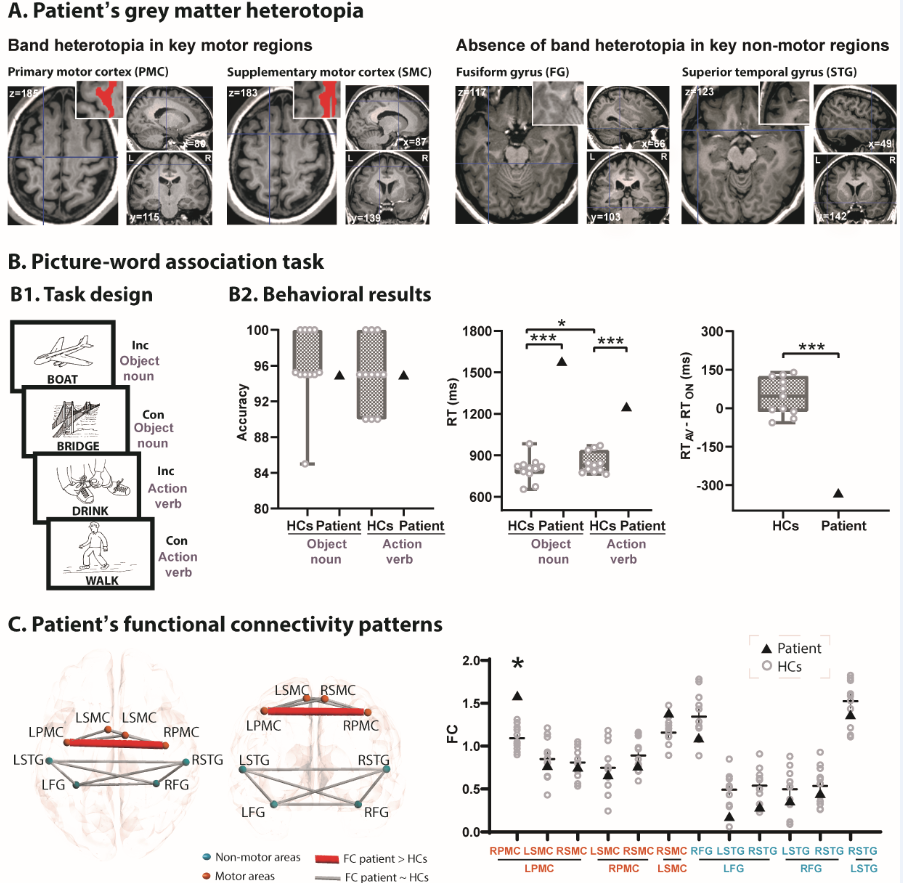An action-concept processing advantage in a patient with a double motor cortex
Miranda, M., Gonzalez Campo, C., Birba, A., Neely, A., Toro Hernandez, F., Faure, E., Rojas Costa, G., Ibáñez, A. & García, A. M. (2022). An action-concept processing advantage in a patient with double motor cortex. Brain and Cognition 156, 105831.
En este trabajo investigamos el procesamiento de la semántica de la acción en una paciente con heterotopía de banda subcortical (síndrome de doble corteza) en regiones motoras del cerebro. A diferencia de personas sanas, la paciente respondió más rápido ante conceptos de acción que ante conceptos de objetos. Este patrón se vio acompañado de una mayor conectividad en las cortezas motoras primarias de ambos hemisferios. Parecería que una doble corteza motora funcional podría favorecer el procesamiento de conceptos de acción.
Para acceder al artículo, hacé click aquí.
An action-concept processing advantage in a patient with a double motor cortex
Miranda, M., Gonzalez Campo, C., Birba, A., Neely, A., Toro Hernandez, F., Faure, E., Rojas Costa, G., Ibáñez, A. & García, A. M. (2022). An action-concept processing advantage in a patient with double motor cortex. Brain and Cognition 156, 105831.
Patients with atrophy in motor brain regions exhibit selective deficits in processing action-related meanings, suggesting a link between movement conceptualization and the amount of regional tissue. Here we examine such a relation in a unique opposite model: a rare patient with a double cortex (due to subcortical band heterotopia) in primary/supplementary motor regions, and no double cortex in multimodal semantic regions. We measured behavioral performance in action- and object-concept processing as well and resting-state functional connectivity. Both dimensions involved comparisons with healthy controls. Results revealed preserved accuracy in action and object categories for the patient. However, unlike controls, the patient exhibited faster performance for action than object concepts, a difference that was uninfluenced by general cognitive abilities. Moreover, this pattern was accompanied by heightened functional connectivity between the bilateral primary motor cortices. This suggests that a functionally active double motor cortex may entail action-processing advantages. Our findings offer new constraints for models of action semantics and motor-region function at large.
To access the full paper, please click here.



